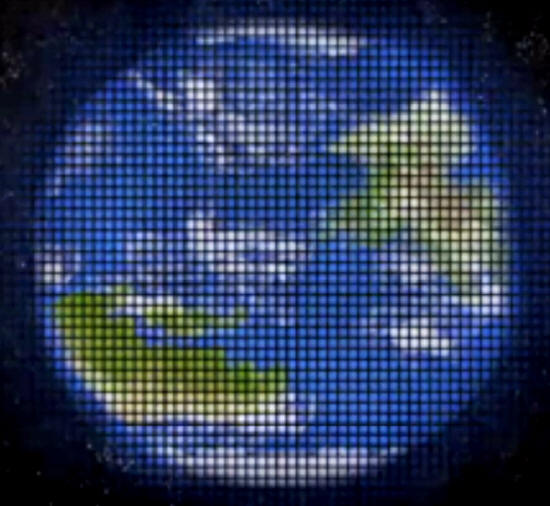|

by Victor Tangermann
April
08, 2020
from
Futurism Website

Artist’s depiction of a possible image
from a Solar Gravitational Lens (SGL)
telescope.
Credits: Slava Turyshev
Source
NASA says it could spot "surface features" and even "signs of
habitability" on faraway planets.
NASA is funding research for a conceptual telescope called a "Solar
Gravitational Lens" (SGL)
that could allow us to observe distant
exoplanets at an astonishing resolution - a futuristic
endeavor that could help find out once and for all if we are alone
in the universe.
The project received Phase I and II funding under the
agency's NASA Innovative Advanced Concepts (NIAC)
program, an incubator for radically futuristic and otherworldly
concepts.
The idea is to,
"directly image a
habitable Earth-like exoplanet within our stellar neighborhood,"
according to
a description of the project.
Over six months of
observation, we could get a resolution of around 25 km,
"enough to see
surface features and signs of habitability."
A NASA image accompanying
the announcement shows an artist's rendition of imagery the
telescope could acquire - showing greenery on the surface of a
distant planet.
Albert Einstein first
predicted 84 years ago that rays of
light skirting the edges of the Sun converge into a lens at about
550 astronomical units (about 82 billion kilometers) away.
Slava Turyshev, physicist at NASA's Jet Propulsion
Laboratory (JPL) and lead author of a related study (Image
Formation for Extended Sources with the Solar Gravitational Lens)
uploaded to the preprint archive arXiv in February, suggests
the phenomenon could allow us to get strikingly detailed images of
distant Earth-like planets.
"In the strong
interference region of the SGL, this light is greatly amplified,
forming the Einstein ring around the Sun, representing a
distorted image of the extended source," reads the paper.
An image included in the
NASA announcement even shows Turyshev's depiction of what an
exoplanet close-up (top image) could look like using a SGL.
But there's a significant hurdle we'd have to overcome.
We'd have to carry a
"meter-class telescope with a solar coronagraph" to an
extraordinary distance from the Sun.
For perspective,
Voyager I is currently only about
123 astronomical units (AU)
away from Earth having reached the edges of the solar system in 2012
- the furthest we've ever sent a man-made object.
To keep costs low and feasibility as high as possible, Turyshev
suggests that a,
"swarm architecture
for smallsats" with solar sails for power could fly out, along
the SGL, to observe "multiple planets/moons of an exosolar
system" at the same time.
|


